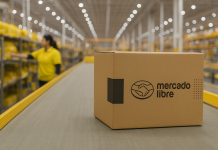B2C e-commerce is far superior to B2B. However, things are shifting, and this is why it matters to us as customers.
The majority of individuals would erroneously assume that the modern shopping experience has little to do with wholesale. But the innovation should really start at the wholesale level. Finding out from someone who is on the inside is the greatest approach to comprehending why. Kristin Savilia entered the fashion industry in the 1990s while working as a buyer for Macy’s.
In less than 20 years, she has made a comeback to the wholesale fashion industry. She is in charge of digitizing the entire purchasing and selling process this time, though. What connection does this have to retail’s future? Three key themes can help us learn a lot about the B2B side’s downstream consequences of digitization owing to technology and innovation.
Data is becoming more prominent
No matter how attractive your website is, it won’t matter if you’re a wholesaler and your product selection is off. Upstream investments in digital transformation yield better outcomes for the customer. With its help, you may go from working in a vacuum to interacting with companies all around the world. Retailers require the exact same thing to put those things in front of the end user, just as consumers make better purchasing decisions when we can compare products across hundreds of companies by price, material, size options, etc.
The organizations that will be successful in the future will be those with the best data to guide them on precisely what to carry on the sales floor. However, going from expo to tradeshow with nothing more than a meager spreadsheet will not do.
Transactional interactions are becoming obsolete
Making the transaction is only the start of the process today. The most successful businesses will address the root of client wants in order to create value for the long term. The industry is skilled at pointing out faults, but actually tackling the deeper problems is the true struggle.
Knowing that a product is sustainable before it reaches your store’s floor is the only way to gauge if you’re on track or not. It’s too late once it’s in your stores. As you are placing orders, you need to know what proportion of your product selection is making a difference. Giving B2B customers visibility into the sustainability of their selection and the ease of making changes to meet their goals is a top priority for Kristin at Joor.
The era of silver bullets must end
E-commerce can only be as successful as your understanding of your clients. You need to be aware of where they want to go and how to get there as quickly and easily as you can. For some people, that can appear at the checkout as “purchase now, pay later.” For others, it can entail SMS delivery notifications. You’ll need a little bit of everything, even if there may not be a one-size-fits-all solution in every situation.
We’ve all seen e-commerce trends come and go at this point. DTC, or direct-to-consumer, was meant to take the role of B2B. Brick and mortar were going to be a thing of the past. However, the future will actually be a hybrid one. No customer or buyer shops entirely online; they engage in all forms of retail. According to Kristin, a digital wholesale platform should do the same, offering solutions for both the physical and virtual selling processes with clients across the world. Why? Because in the future, it will be expected to provide flexibility and seamless connection to get in front of your audience, wherever they may be, whether it be a B2B buyer or the end user.
The variety that companies are adopting in their distribution strategy is another example of this hybrid approach. For instance, Brooklinen, a direct-to-consumer company, recently unveiled a B2B collection geared for boutique hotels. Rich Fulop, the company’s CEO, stated to Retail Dive that new retail locations would be opened in 2022 since the company has to have a physical presence.












